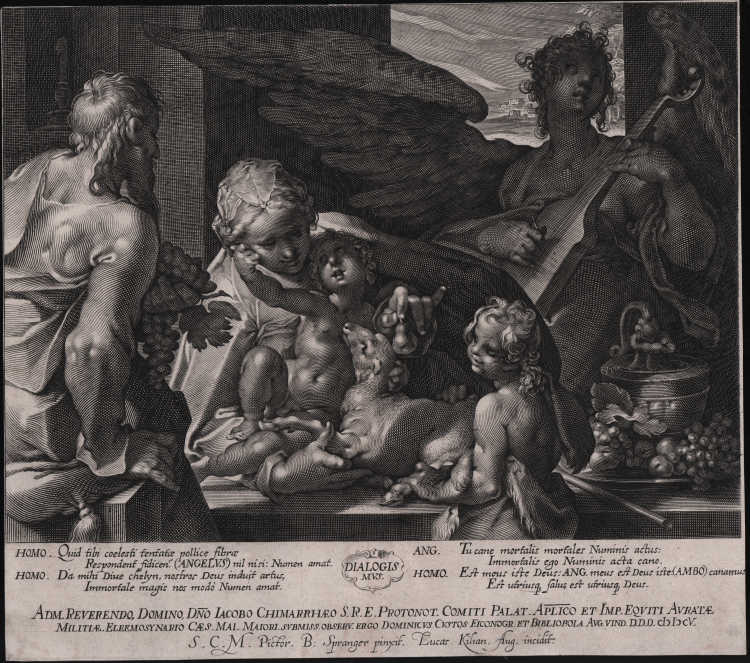



| Reference: | S40811 |
| Author | Lucas KILIAN |
| Year: | 1605 |
| Measures: | 327 x 290 mm |


| Reference: | S40811 |
| Author | Lucas KILIAN |
| Year: | 1605 |
| Measures: | 327 x 290 mm |
Engraving, 1605, signed in lower margin: 'S.C.M. Pictor. B: Spranger pinxit. Lucas Kilian. Aug. incidit.' Lettered in plate, in lower margin: 'HOMO. Quid tibi ... est utruisque Deus.'; in dedication to Jacob Arrhaeus by Dominicus Custos: 'ADM. REVERENDO. DOMINO. ... DOMINICUS CUSTOS EICONOGR. ET BIBLIOPOLA AUG. VIND. D.D.D. CI [backward C] I[backward C]CV.'.
After Bartholomeus Spranger.
A fine impression, printed with tone on contemporary laid paper, trimmed to the platemark, trace of central fold in the middle, otherwise very good condition.
|
Hollstein XVII.19.45; Wurzbach II.650.
|
Lucas KILIAN (Augsburg, 1579 - Augsburg, 1637)
|
He was apprenticed to his stepfather Dominicus Custos, an engraver from Antwerp. His earliest independent print shows the influence of the Netherlands, which was to be lasting: it is a large view of the Augustus Fountain in Augsburg (1599) after a drawing by Frans Aspruck, exhibiting the type of display work brought by Italian-trained Dutch artists to Augsburg. In 1601 Kilian himself travelled to Italy. He went from town to town, mainly making reproductive engravings. In Venice (1602–3) he copied works by Titian, Veronese, Tintoretto and Palma Vecchio; some of these prints are the only records of now untraced paintings. From this time he developed a ‘painterly manner’ (Wengenmayr), achieving fine gradations of light and shade with richly varied use of the burin.
|
|
Hollstein XVII.19.45; Wurzbach II.650.
|
Lucas KILIAN (Augsburg, 1579 - Augsburg, 1637)
|
He was apprenticed to his stepfather Dominicus Custos, an engraver from Antwerp. His earliest independent print shows the influence of the Netherlands, which was to be lasting: it is a large view of the Augustus Fountain in Augsburg (1599) after a drawing by Frans Aspruck, exhibiting the type of display work brought by Italian-trained Dutch artists to Augsburg. In 1601 Kilian himself travelled to Italy. He went from town to town, mainly making reproductive engravings. In Venice (1602–3) he copied works by Titian, Veronese, Tintoretto and Palma Vecchio; some of these prints are the only records of now untraced paintings. From this time he developed a ‘painterly manner’ (Wengenmayr), achieving fine gradations of light and shade with richly varied use of the burin.
|